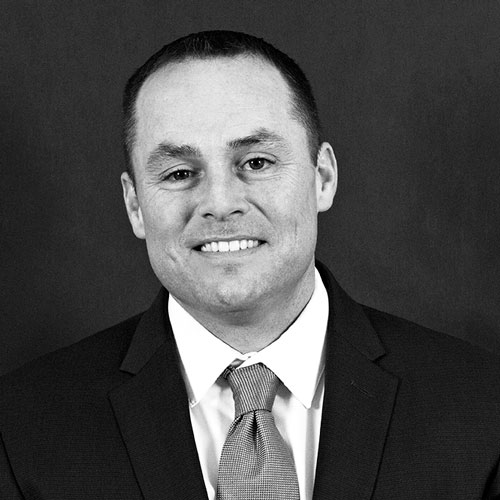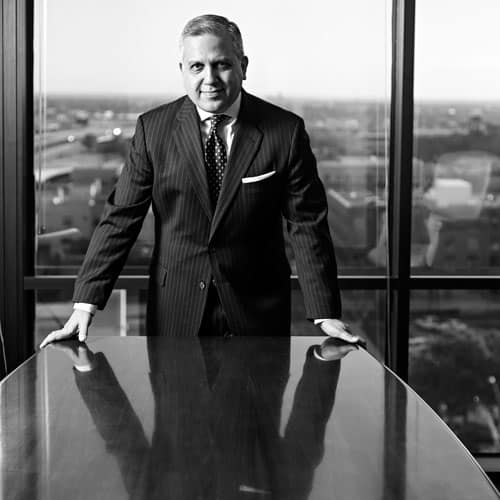Risk can be scary for a company to take on, but Jim Costa embraces it at TCF Financial Corporation, where it’s actually the key to the national bank holding company’s success. For Costa, chief risk officer, weighing the benefits of new growth opportunities with the possible exposure often yields more benefits than pitfalls.

“Risk management helps move the company forward by setting the guardrails in which you can operate,” Costa says. “We are very thoughtfully balanced between allowing the company to grow, but to do so at the right pace and with the right controls. That allows the business to take on new initiatives and become more profitable, but do it in the right way.”
Those types of risks include protecting customer data, compliance with new regulations, deciding if opportunities to enter a new business arena or offer new credit are prudent, and many more, which keep Costa alert to opportunity. “Every time you are entering into a new geography or product, it comes with a lot of risk, and it comes with a lot of regulation,” he says.
Before the recession, TCF was a retail branch bank with typical checking and savings accounts. Today, its focus includes six different businesses that cover leasing, financing technology, financing inventory, auto lending, financing commercial real estate, and home equity products.
After years of working at much larger banks, Costa came to TCF in 2013 as the company was redefining itself in a post-recession economy. Although the company had people thinking about risk management in other departments, Costa was tasked with building his own department from the ground up.
Over two years, Costa put together a department of 300 people focused on eighteen different areas of possible risk, sold the need for such a structure to the board of directors—to whom he directly reports—and put his plan into action. “The question was, ‘How can you leverage risk management for a bank whose business model has changed, but still maintain competitiveness?’” he says.
To answer that question, there’s a team that makes sure the bank complies with consumer regulations, a team that ensures terrorists aren’t using TCF to launder money, a team that reviews money given to borrowers to make sure it was the right decision, and a team that looks at cyber security, disaster recovery, fraud management, and more. “It is a fairly complex collection of specialists, but to be profitable today you can’t be flat-footed in any of these areas,” Costa says. “You face all of these risks every day.”
Costa’s twenty-five years of financial services experience has accustomed him to risk. Before TCF, Costa served as executive vice president of risk and head of enterprise portfolio management at PNC Financial Services Group. But he first fell in love with economics while working under the chief economist at Meryll Lynch early in his career. “I was enamored with his ability to capture complex concepts and translate them to investors who aren’t necessarily schooled in the business or principles of economics,” says Costa, who soon after entered the doctoral program in economics at the University of Minnesota.
For other companies just getting started in building their risk management infrastructure, Costa says the most important first step is getting the business leaders on board with the idea. “You really need to start off with a compelling argument of why you would need to take on such a large project,” he says.
For Costa, that argument is that a strong risk management infrastructure would allow TCF to keep growing in the face of strict regulations. “I would rather have this built today so we don’t have to keep building. It allows the bank to grow, and we don’t have to keep reinventing the wheel,” he says.
Costa started with a gap analysis to find out where the possible holes in the organization were and then created a whole new risk infrastructure around that analysis. He has launched a hundred new initiatives in two years, but that doesn’t mean everything has been easy.
“I see people who one day feel exasperated with a lack of progress, but then I see them be patient and realize their goal—that is what makes me the most satisfied,” Costa says. “It’s really satisfying to see those small wins that happen all the time.”
Now that the infrastructure is in place, Costa is embracing technology to make it increasingly efficient. “I don’t want to degrade our capabilities in any way, but be more efficient in delivering the risk service,” he says. “That will drop our bottom line and make us more profitable.”
While the financial industry has been on a roller coaster the past several years, according to Costa, he adds that it is definitely worth it. “Hang on,” he says, advising new risk managers in the field. “This is a very dynamic industry, and you’ve got to be willing to roll with the changes.”

